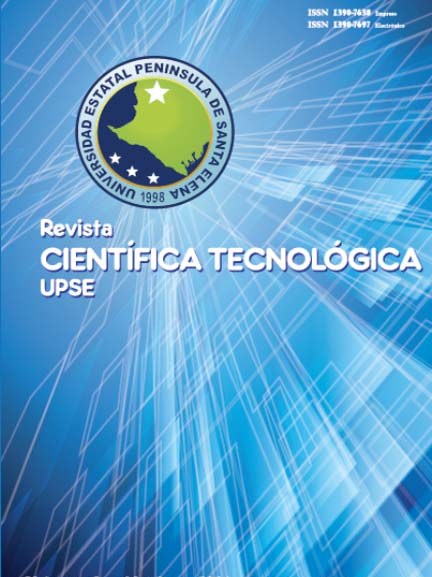Mobility and Biomechanical Adaptation: An approach to the relationship between territory and geometric properties of the lower limb in the pre-Hispanic population of Gran Canaria
DOI:
https://doi.org/10.26423/rctu.v1i3.30Keywords:
Archaeology,, Bioarchaeology, Mobility pattern, human remains, GIS, ostemetricAbstract
The relationship between territory and bone structure is important to define the influence of this factor and establishing more precise methods of analysis in the investigation of mobility in archaeological populations. This article aims to explore the relationship between mobility and territory in pre-Hispanic society of Gran Canaria (Canary Islands, Spain). The geometric properties of the lower limb and its relationship with the slope and economic catchment area of settlements related to settlements are evaluated. This contribution is a model that serves as a reference for the analysis of mobility and influence of territory in archaeological populations
Downloads
References
Kelly R. L., 1992. Mobility/sedentism: concepts, archaeological measures, and effects. Annual Review of Anthropology, 21: 43-66.
Murrieta-Flores P., 2012 Entendiendo la movilidad humana mediante tecnologías espaciales: el papel de las áreas naturales de tránsito en el Suroeste de la Península Ibérica durante la Prehistoria reciente, Trabajos de Prehistoria, 69 (1): 103-122.
García San Juan L., 2005. Introducción al Reconocimiento y Análisis Arqueológico del Territorio. Ariel Prehistoria. Barcelona.
Ruff C.B., 2008. Biomechanical analyses of archeological human skeletons. En: Katzenberg M.A., Saunders S.R. Biological anthropology of the human skeleton. Wiley-Liss. New York. pp. 183–206.
Vicent García J. M., 1991. Fundamentos teórico-metodológicos para un programa de investigación arqueo-geográfica. En: López García, P.: El cambio cultural del IV al II milenios A.C. en la comarca de Murcia. Consejo superior de investigaciones científicas. Madrid: 31-117.
Chisholm M.D.I., 1962 Rural Settlement and land use: an essay in location. Transaction Books. Londres.
Wescott D., 2005. Population variation in femursubtrochanteric shape. J Forensic Sci, 50: 286-293.
Bridges P., Blitz J., Solano M., 2000. Changes in long bone diaphyseal strength with horticultural intensification in west central Illinois. American Journal of Physical Anthropology 112:217-238.
Buikstra J.E., Ubelaker D., (Eds.), 1994. Standardsfor data collection from human skeletal remains. Arkansas Archaeological Survey Research Series, Number 44. Fayetteville.
Bruzek J., 2002. A method for visual determination of sex, using the human hip bone. Am J PhysAnthropol117: 157-168.
Brothwell D., 1987. Desenterrando huesos. La excavación, tratamiento y estudio de restos del esqueleto humano. Fondo de la Cultura Económica.Madrid.
Schmitt A., 2005. Une nouvelle méthode pourestimerl’âgeaudécès des adultes à partir de la surface sacro-pelvienneiliaque. Bull mem soc anthropol Paris 17: 89-101.
Rissech C., Estabrook G., Cunha E., Malgosa A., 2007. Estimation of age-at-deathforadult males using the acetabulum, applied to four western European populations. J ForensicSci 52 (4): 774-778.
Santana Cabrera J., 2011. El trabajo fosilizado: patrón cotidiano de actividad física y organización social del trabajo en la Gran Canaria prehispánica. Tesis doctoral. Universidad de Las Palmas de Gran Canaria.
Pomeroy E., Zakrzewski S.R., 2009. Sexual dimorphism in diaphyseal cross-sectional shape in the Medieval Muslim population of Écija, Spain and Anglo-Saxon Great Chesterford, UK. International Journal of Osteoarchaeology 19: 50-65.
Larsen C.S., 1997. Bioarchaeology. Interpreting behavior from the human skeleton. CambirdgeUniversity Press.
Olivier G., 1960. Pratique anthropologique. Vigotfrères. Paris.
Campillo D., Subirá M. E., 2004. Antropología Física para arqueólogos. Colección Ariel Prehistoria.Ariel. Barcelona.
Wanner I.S., Sosa T.S., Alt K.W., Blos V.T., 2007. Lifestyle, Occupation, and Whole BoneMorphology of the Pre-Hispanic Maya CoastalPopulationfromXcamboYucatan, Mexico. International Journal of Osteoarchaeology 268: 253-268.
Cole T., 1994. Size and shape of the femur and tibia in northern Plains Indians. En: Owsley, D., Jantz, R. Skeletal biology in the Great Plains: migration, warfare, health, and subsistence. SmithsonianInstitution Press. Washington, DC. pp. 219–234.
Uriarte González A., (2005): Arqueología del Paisaje y Sistemas de Información Geográfica: una aplicación en el estudio de las sociedades protohistóricas de la cuenca del Guadiana Menor (Andalucía oriental), Bronce Final y Edad del Hierro en la Península Ibérica (A. Blanco, A.C., Cancelo, A. Esparza, Eds.), Colección Aquila fuente 96, Ediciones Universidad de Salamanca. Salamanca. pp. 603-621.
Gilman A., Thornes J.B., 1985. Land-use and Prehistory in southeast of Spain. Allen &Unwin. Londres.
Malgosa A., 1992. La población talaiòtica de Mallorca. Intitut d ́Estudis Catalans. Barcelona.
Kennedy K.A.R., 1989. Skeletal markers of occupational stress. En:Iscan M., Kennedy, K.A.R., Reconstruction of Life from the skeleton. Wiley-Liss, Nueva York. pp. 129-160
Downloads
Published
Issue
Section
License
El titular de los derechos de autor de la obra, otorga derechos de uso a los lectores mediante la licencia Creative Commons Atribución-NoComercial-CompartirIgual 4.0 Internacional. Esto permite el acceso gratuito inmediato a la obra y permite a cualquier usuario leer, descargar, copiar, distribuir, imprimir, buscar o vincular a los textos completos de los artículos, rastrearlos para su indexación, pasarlos como datos al software o usarlos para cualquier otro propósito legal.
Cuando la obra es aprobada y aceptada para su publicación, los autores conservan los derechos de autor sin restricciones, cediendo únicamente los derechos de reproducción, distribución para su explotación en formato de papel, así como en cualquier otro soporte magnético, óptico y digital.












